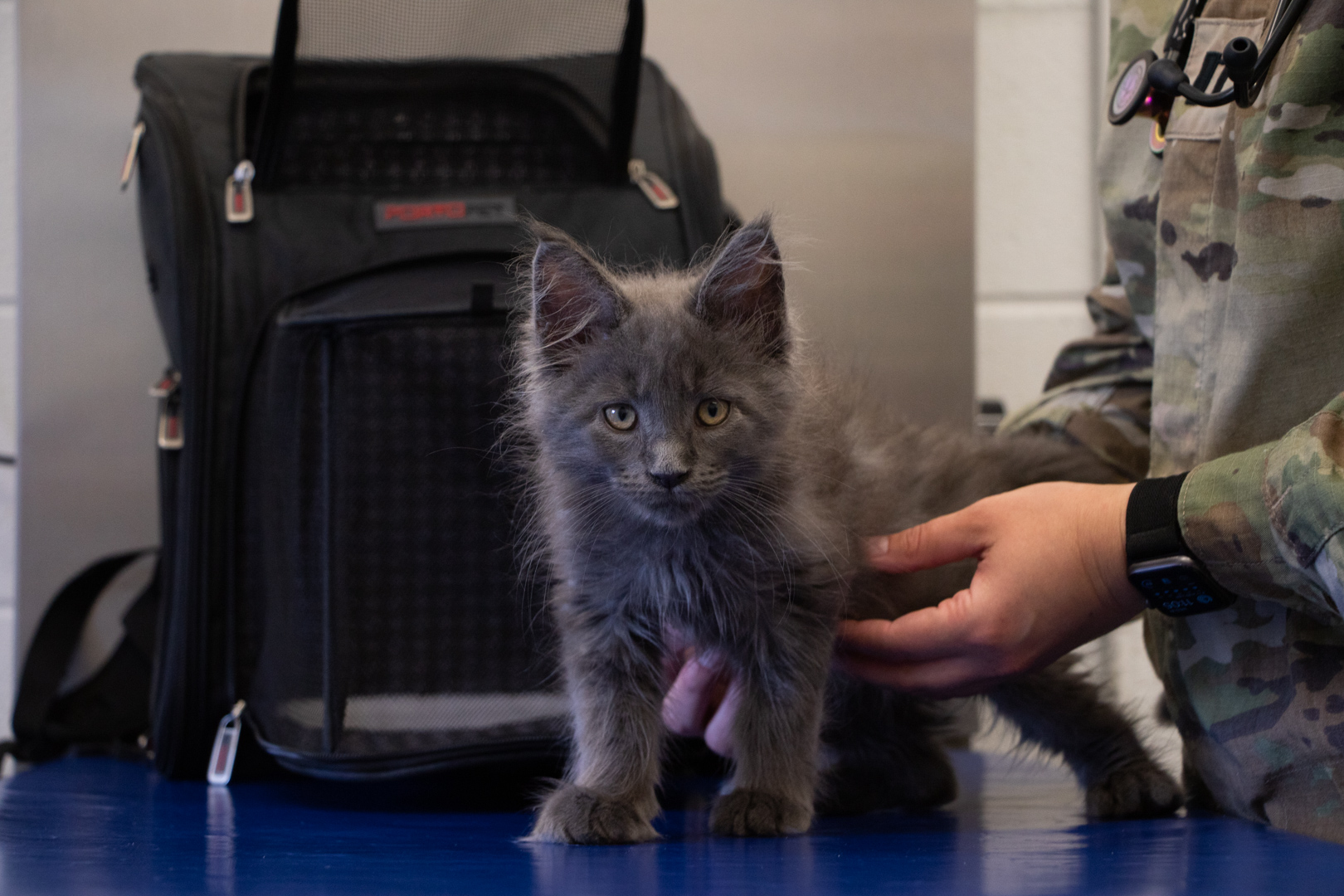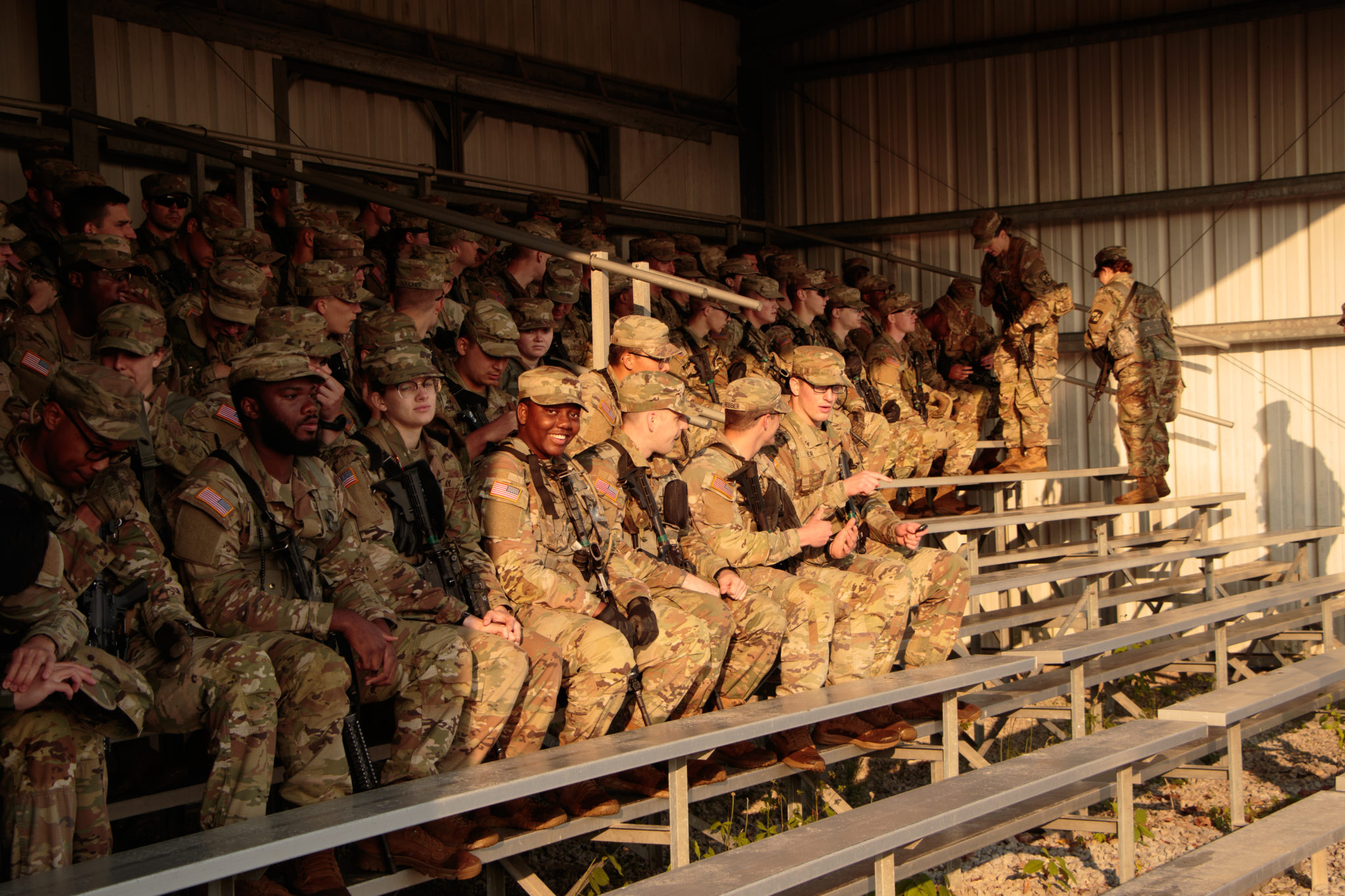FORT KNOX, KY. – Cadets from Fourth Regiment Advanced Camp applied their map and mathematics skills while participating in call for fire training on June 13.

Cadets Alyia Rosado, Indiana University, and Connor Nahrgang, Baylor University, work together to identify targets in a Call for Fire training exercise on June 13 at Fort Knox, Ky. (Photo by Emily Peacock)
“Call for fire training is an integral part of army military reconnaissance tasks,” said Cadet Joshua Jones, Murphy, N.C., Jacksonville State University. “Cadets are learning how to properly apply an artillery round to engage long range enemy targets.”
The training included learning the basic terminology associated with Calling for Fire, mapping the coordinates of targets, an interactive audio/visual representation of the call for fire, a pre-test as well as a final exam to test their call for fire knowledge.
In addition, Cadets learn about the six elements of call for fire, which includes observer identification, warning order, target location, target description, method of engagement and method of fire and control.
The purpose of call for fire training is to teach the Cadets how to identify the enemy, mark their location and take them out, said Staff Sgt. Thomas Duncan.
“Cadets tend to struggle most with map reading and math,” said Duncan. Cadets are provided with maps of the terrain as well as a protractor and any notes taken during the lecture portion of the training to help assist them in identifying their targets.
When asked what Cadets would take away from their experience with call for fire training, Sgt. Duncan replied that simply confidence is a very important take-away from these exercises.

Cadet Josh Jones, Jacksonville State University, uses a map to identify targets in a Call for Fire training exercise on June 13 at Fort Knox, Ky. (Photo by Emily Peacock)
Ultimately, you can picture call for fire as a real life game of Battleship, only the view of your target isn’t obscured by a plastic pegboard that resembles the ocean and instead of the sound effects your opponent might make once you’ve destroyed their battle ship, fires on a screen indicate a direct hit.
In the audio/visual portion of the training, Cadets are able to visualize their targets on the screen in front of them. It is up to them, however, to identify the exact coordinates on a map to successfully take out their target.
“My favorite part of this exercise is the audio/visual representation of the fires as they are being engaged,” said Cadet Jones. “They provide us with the ability to create the call for fire and then see it on a screen in a safe training environment.”
To be clear, no actual targets (or battleships) were harmed during the duration of these exercises.




